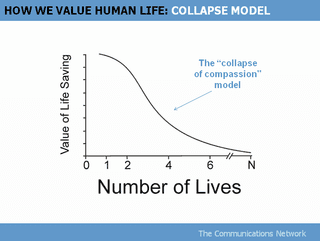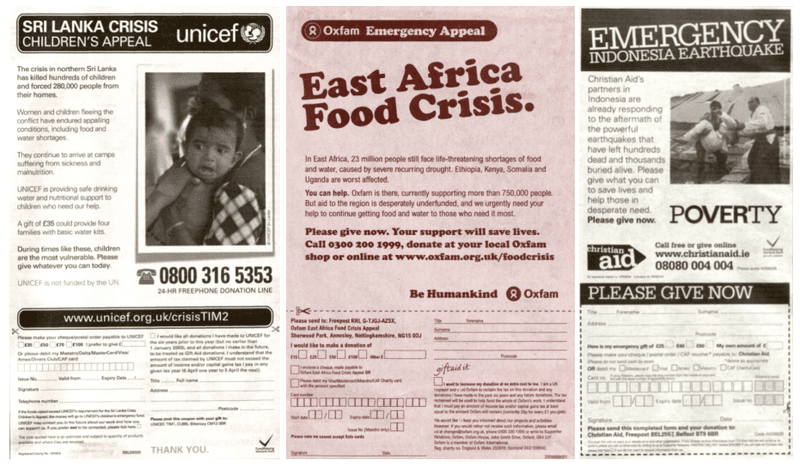Show donors what they can do. Not what they can't
When it comes to creating appeals, there is a natural assumption that high numbers generate high levels of income.
If many thousands of people are at risk or in danger, logic would dictate that donors will give more money than if just one person is affected.
And this seems to be the practice that many charities follow. Take a look at any emergency ad and you'll probably see the size of the task featured in the first paragraph – 280,000 people forced from their homes, thousands buried alive and 23 million facing life threatening shortages of food.
These ads, from three great organisations probably raised significant sums. But there is a growing body of research that shows featuring such large numbers serves to suppress response rates, perhaps reducing the effectiveness of these essential fundraising tools.
By presenting unimaginable levels of need we make people feel helpless. Such large numbers don't convey need or increase urgency. They simply serve to remind donors of the people that they can't help.
Combating helplessness is one of the key need states that donors experience. And by helping them tackle it, we can dramatically increase the amount of money we raise.
I learned this lesson back when I worked at ActionAid. We were running a new set of ads to recruit child sponsors. One execution that had performed well in research wasn't working on the page. It featured a photograph of a young Nepalese girl, Kumari, holding her baby sister.
We swapped the photograph to another of Kumari and ran the ad again. This time she was on her own. The response rate immediately hit the expected target.
Same design, same copy, same child.
I wasn't 100% sure if it was featuring just Kumari that had improved the response rate – facial expression had a role to play too. But subsequent tests and research demonstrated the effectiveness of focusing on one person in appeal communications.
Dr. Paul Slovic offers some examples of these studies in a fascinating webinarfrom The Communications Network.
In it he presents the "Collapse of Compassion" model to describe the reduction in response rates when the number of people in need of help is increased.
 One study that he refers to sums this up rather well. Three groups of people were each presented with a different communications asking them to help Save The Children.
One study that he refers to sums this up rather well. Three groups of people were each presented with a different communications asking them to help Save The Children.
- A factual letter full of statistics...
Food shortages in Malawi are effecting more than 3 million children.
- A letter about one girl, Rokia and the impact of the food shortages on her.
- A combined approach featuring both the statistics and Rokia's story.
The factual letter generated an average gift of $1.14, Rokia's letter generated an average gift of $2.38 and the combined approach generated $1.43.
He also describes a Swedish study that found the difference between featuring two children instead of one amounted to a reduction in income of approximately 15%.
There is plenty more to learn by listening to the complete webinar. Not least, you'll hear Paul's advice on what charities can do to improve their appeal results.
And that can be summed up very simply – show donors what they can do – not what they can't.
By focusing on the magnitude of problems we push donors away. By helping them combat their feelings of helplessness we will engage and involve them.
Click here to read more about the complete set of donor need states.
Tags In
Related Posts
1 Comment
Comments are closed.
The Essentials

Crack the Code to Regular Giving: Insights, Strategies, and a Special Giveaway!

‘Tis Halloween. Keep to the light and beware the Four Fundraisers of the Apocalypse!

Why do people give? The Donor Participation Project with Louis Diez.

A guide to fundraising on the back of a postcard

What does the latest research tell us about the state of fundraising?







Thank you for a well researched, easy to absorb article.
Shame I couldn’t find a TweetMe button so I could share it with my charity tweeple.